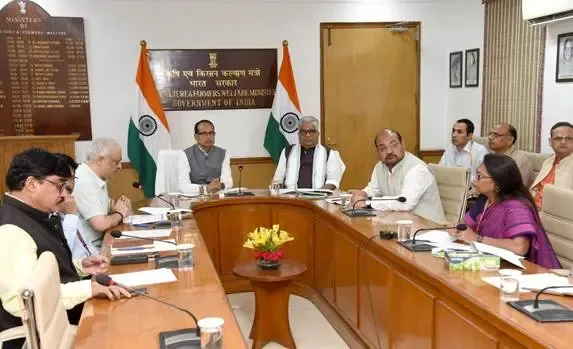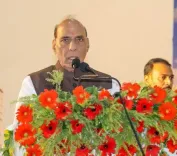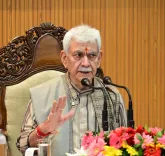How Are Union Ministries and States Tackling Toxic Air in Delhi?

Synopsis
Key Takeaways
- Collaboration among Union ministries and state governments is vital for tackling stubble burning.
- Financial assistance is being offered to encourage farmers to adopt alternative practices.
- Real-time monitoring is essential for effective stubble management.
- Awareness campaigns are needed to educate farmers on the impacts of stubble burning.
- Coordination between various stakeholders will lead to better environmental outcomes.
New Delhi, Oct 7 (NationPress) A meeting was held on Tuesday to explore strategies aimed at combating air pollution stemming from stubble burning in Delhi and various northern states. This gathering of state agriculture ministers alongside Union Agriculture and Environment Ministers took place at Krishi Bhavan, chaired by Union Agriculture and Farmers’ Welfare Minister Shivraj Singh Chouhan.
Discussions included ways to promote the effective use of paddy residue and to boost awareness, financial backing, monitoring, crop management, and diversification efforts among farmers, according to an official release.
Participants included Union Minister for Environment, Forest and Climate Change Bhupender Yadav, Punjab Agriculture Minister Gurmeet Singh Khudian, Haryana Agriculture Minister Shyam Singh Rana, Uttar Pradesh Agriculture Minister Surya Pratap Shahi, and Delhi Environment Minister Manjinder Singh Sirsa.
Yadav praised the states for their proactive stance on stubble management, stressing the need for improved coordination between the Ministry of Agriculture and state governments over the upcoming ten days.
He highlighted the significance of collecting and storing stubble to facilitate its industrial use, pointing out its potential applications in brick kilns and thermal power plants.
The Agriculture Ministers from Punjab, Haryana, and Uttar Pradesh updated the Union Agriculture Minister on their stubble management statuses, assuring that they are fully committed to implementing stubble management schemes.
The Haryana Agriculture Minister noted that the state is incentivizing farmers to avoid burning stubble, leading to a notable positive shift towards alternative management practices.
Chouhan acknowledged the commendable efforts so far but emphasized that ongoing and consistent work is vital for achieving broader objectives.
He pointed out the necessity for training, awareness, capacity building, and real-time monitoring.
“With collaborative efforts among the Centre and states, incidents of stubble burning will undoubtedly decline in the days ahead,” Chouhan asserted.
“Real-time monitoring on the ground is crucial. I believe that with persistent efforts, we will achieve better results and protect our environment and climate,” he added.
Chouhan stressed the importance of farmer awareness and proposed that panchayats, local representatives, and nodal officers should play active roles at the village level for better outcomes.









